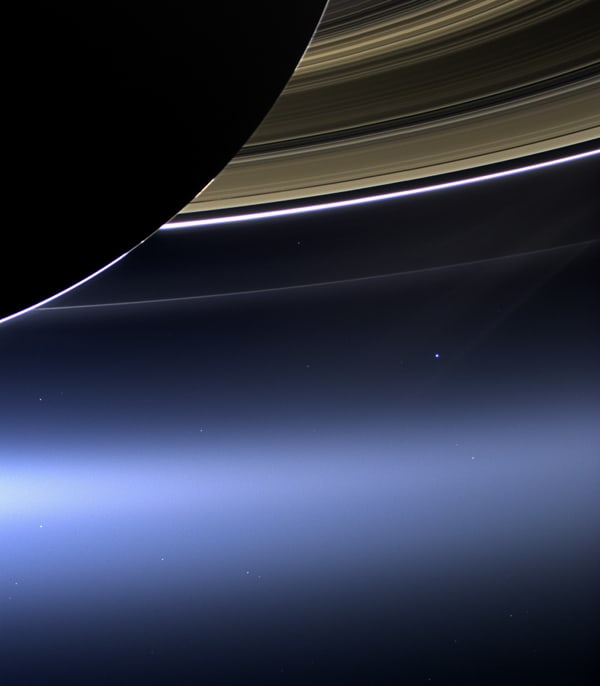
By Madeleine Fowler, who is doing a work experience placement at Physics World
It is hard to believe while standing among 7 billion other people on this huge and diverse planet we call home that it is not the centre of the universe in the same way that it is the centre of our lives. From the point of view of an ordinary person such as myself, the stars and the other planets seem almost to rotate around us as we go about our everyday lives. But as we all know, this is not the case. In this photo of the Earth taken on 19 July by the Cassini Interplanetary Spacecraft, approximately 900 million miles away, the Earth and the Moon occupy less than one pixel of the photograph. So perhaps we are not quite as important as we thought. Not a big fish in a small pond, but a very small fish in an infinite pond.
Photos of our planet from interplanetary spacecraft are extremely rare. The first was called “Earthrise” and was taken in 1969 by the Apollo 8 Moon mission, from a distance of 240,000 miles. A second, in 1990, was taken by Voyager 1, at 4 million miles from the Earth. This may seem surprising when compared with the millions of photos we take every day here on Earth. However, it is only under particular circumstances that the high-resolution cameras used on spacecraft can be turned in the direction of our planet. The reason for this is that the Earth is very close to the Sun and exposing a camera’s sensitive detectors to direct sunlight would cause extreme damage. On this particular occasion the Sun had temporarily moved behind Saturn from the point of view of the Cassini spacecraft, so it was possible to turn the camera around and take this photo through a gap between Saturn’s E ring and the thin G ring.
This is the first time that the Earth and the Moon have been captured as two distinct objects by an interplanetary spacecraft camera. So on this momentous occasion NASA invited the public to find Saturn in the sky and wave. More than 20,000 people took part in this around the world. NASA says that this is “the first time people on Earth had advance notice that their planet’s portrait was being taken from interplanetary distances”.
The Cassini-Huygens mission aims to explore the Saturn system, and is a cooperative project of NASA, the Italian Space Agency and the European Space Agency.



